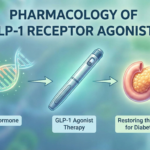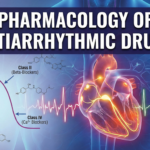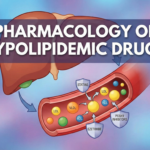Introduction
Skeletal muscle relaxants are a class of medications commonly used to alleviate muscle spasms and spasticity. These drugs are often employed in the management of conditions like multiple sclerosis and cerebral palsy and after surgical procedures to facilitate intubation or mechanical ventilation. Understanding the pharmacology of skeletal muscle relaxants is crucial for healthcare professionals to ensure effective treatment and minimize side effects. This chapter aims to provide an overview of the pharmacology of skeletal muscle relaxants, including their classification, examples, and pharmacological properties.
Classification of Skeletal Muscle Relaxants
Skeletal muscle relaxants can be broadly classified into two categories:
1. Spasmolytics (Antispasmodics)
These drugs are primarily used to treat muscle spasms resulting from conditions like musculoskeletal injuries or inflammation.
Examples:
- Baclofen
- Cyclobenzaprine
- Carisoprodol
2. Neuromuscular Blocking Agents
These agents are used in surgical settings to induce muscle paralysis, facilitating intubation and mechanical ventilation.
Examples:
- Succinylcholine
- Rocuronium
- Vecuronium
The pharmacology of these individual drugs
Spasmolytics
1. Baclofen
- Mechanism of Action: Acts on GABA-B receptors in the spinal cord, inhibiting the release of excitatory neurotransmitters.
- Indications: Multiple sclerosis, spinal cord injuries, and other spastic conditions.
- Side Effects: Drowsiness, dizziness, and weakness.
2. Cyclobenzaprine
- Mechanism of Action: Works centrally, primarily in the brainstem, to reduce muscle tone.
- Indications: Acute musculoskeletal conditions.
- Side Effects: Dry mouth, fatigue, and blurred vision.
3. Carisoprodol
- Mechanism of Action: Unknown but likely acts centrally to modify interneuronal activity.
- Indications: Short-term treatment of muscle spasms.
- Side Effects: Drowsiness, dizziness, and dependency potential.
Neuromuscular Blocking Agents
1. Succinylcholine
- Mechanism of Action: Depolarizing neuromuscular blocker that mimics acetylcholine but is not broken down as quickly, leading to prolonged depolarization and muscle paralysis.
- Indications: Rapid sequence intubation.
- Side Effects: Hyperkalemia, malignant hyperthermia.
2. Rocuronium
- Mechanism of Action: Non-depolarizing neuromuscular blocker that competes with acetylcholine for receptor sites, preventing muscle contraction.
- Indications: Induction and maintenance of anesthesia.
- Side Effects: Hypotension, tachycardia.
3. Vecuronium
- Mechanism of Action: Similar to rocuronium, it is a non-depolarizing neuromuscular blocker.
- Indications: General anesthesia, mechanical ventilation.
- Side Effects: Hypotension, prolonged paralysis.
Conclusion
Understanding the pharmacology of skeletal muscle relaxants is essential for their effective and safe use. Whether treating muscle spasms or facilitating surgical procedures, these drugs have specific mechanisms of action, indications, and side effects that healthcare professionals must be aware of. By tailoring the choice of muscle relaxant to the clinical situation, practitioners can optimize patient outcomes while minimizing adverse effects.
Bibliography
- Goodman & Gilman’s The Pharmacological Basis of Therapeutics, 13th Edition.
- Katzung, B. G. (2018). Basic & Clinical Pharmacology, 14th Edition.
Note: This chapter is intended for educational purposes and should not replace professional medical advice. Always consult a healthcare provider for medical advice and treatment.
📚 AI Pharma Quiz Generator
🎉 Quiz Results
Medical Disclaimer
The medical information on this post is for general educational purposes only and is provided by Pharmacology Mentor. While we strive to keep content current and accurate, Pharmacology Mentor makes no representations or warranties, express or implied, regarding the completeness, accuracy, reliability, suitability, or availability of the post, the website, or any information, products, services, or related graphics for any purpose. This content is not a substitute for professional medical advice, diagnosis, or treatment; always seek the advice of your physician or other qualified health provider with any questions you may have regarding a medical condition and never disregard or delay seeking professional advice because of something you have read here. Reliance on any information provided is solely at your own risk.









